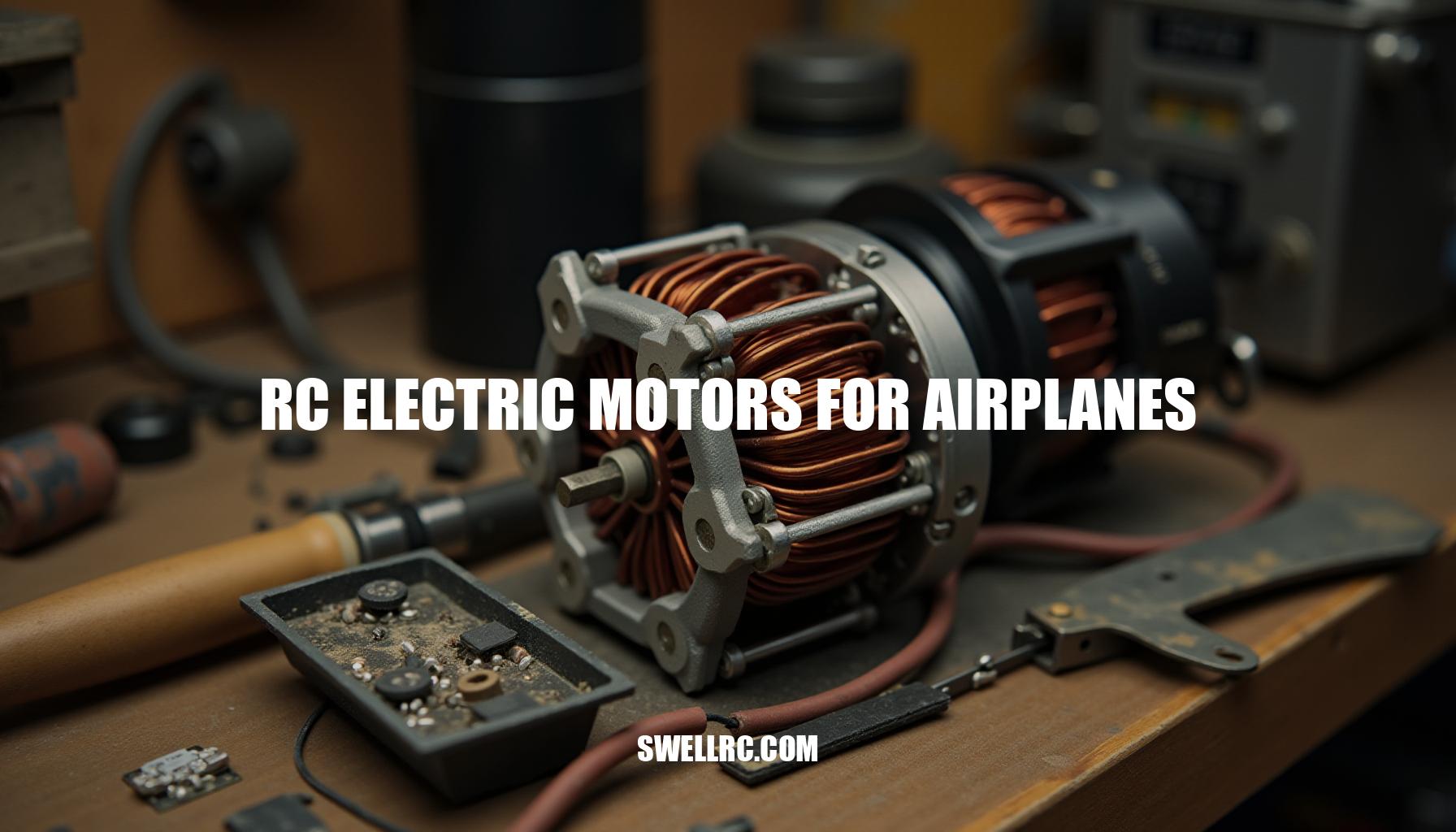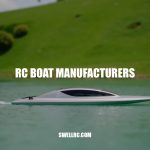Mastering RC Electric Motors for Airplanes
The first time I swapped a tired brushed can for a crisp brushless outrunner, my trainer leapt off the runway like it had grown new wings—that’s when I realized how much RC plane motors define the entire flight experience. Today’s electric RC flight setup delivers astonishing thrust, precise throttle response, and clean, low-maintenance flying. We’ll explore motor types, power output, speed, efficiency, and the practical choices that turn specs into smiles.
Brushless motors for airplanes have evolved fast—lighter stators, stronger magnets, and LiPo batteries with serious punch have made quiet, reliable power a reality. If you’re curious about how electric stacks up against glow or gas, here’s a broader context on alternatives: https://www.swellrc.com/rc-airplane-engines/. In this guide, I’ll demystify selection, matching components, and real-world setup tips so you can pick (and fly) the perfect motor with confidence within the wide variety of model aircraft power systems available today.
Understanding RC Electric Motors for Airplanes: The Heart of Your Flight
RC electric motors are essential components that convert electrical energy into the propulsive force moving your airplane. When choosing between brushed vs brushless motors, brushless models are preferred for their electronic commutation via an ESC, resulting in cooler operation, longer lifespan, and higher power-to-weight efficiency—making them ideal for most RC airplane applications.
The outrunner vs inrunner motor distinction centers on their mechanical design and performance characteristics. Outrunners spin the outer can, producing higher torque at lower RPMs, which is perfect for swinging larger props on trainers, sport planes, and 3D ships. In contrast, inrunners spin the internal rotor, delivering higher RPM, making them suitable for ducted fans or gearbox setups.
Understanding the KV rating explained is crucial. The KV rating indicates the motor’s RPM per volt with no load. For example, a 900 KV motor powered by a 3S (11.1 V) battery spins approximately 9,990 RPM unloaded; actual RPM will decrease under prop load.
Lower KV motors typically pair with larger props and/or higher voltage for efficient thrust, while higher KV motors favor smaller, faster-spinning props.
Effective thrust and efficiency depend not only on power (watts = volts × amps) but also on prop choice and airframe drag. The power-to-weight ratio provides a quick guideline: 75–100 W/lb for gentle trainers, 100–150 W/lb for lively sport planes, and 150–250+ W/lb for 3D and speed-focused aircraft.
Consideration of motor mount configuration is vital. Whether using firewall vs stick mount or front vs rear placement, ensure sufficient clearance, proper alignment, and adequate airflow across the stator for optimal cooling.
If you’re unsure about sizing your motor, this step-by-step guide is invaluable. To simplify your choice, refer to the table below summarizing motor types and their typical specs and uses:
| Motor Type | KV Rating | Recommended Prop Range | Voltage Range | Typical Airplane Use |
|---|---|---|---|---|
| Brushed | Around 1000-1500 KV | Small props (5″-7″) | 2S-3S LiPo | Beginner, budget trainers |
| Brushless Inrunner | 1500-3000 KV | Smaller props (4″-7″) | 2S-4S LiPo | Ducted fans, speed planes |
| Brushless Outrunner | 300-1200 KV | Medium to large props (7″-14″+) | 3S-6S LiPo | Trainers, sport, 3D planes |
When you carefully balance these specifications—motor type, KV rating, prop size, voltage, and mounting—you can maximize motor thrust and efficiency, achieving the best possible flight experience. That’s the moment you feel the lift, and all the calculations pay off.
Matching Components: The Formula for Efficiency and Power
A great motor only shines when the ESC, propeller, and battery are perfectly matched. Voltage, current, and KV interact like gears in a transmission: more voltage (cells) spins the motor faster; prop diameter and pitch load the motor; current spikes when the prop is too big or the KV too high for the voltage. An example of ESC compatibility gone wrong is a high-KV motor on 4S with an oversized prop drawing way beyond the ESC’s rating—heat rises, flight time plummets, and you risk cooking windings.
When selecting an ESC, choose one with 20–30% current headroom over your measured peak and ensure the BEC supports your servo count and type. Battery pairing involves considering capacity (mAh) for duration and battery C rating for safely delivering current; internal resistance affects voltage sag under load. Optimizing propeller selection is where thrust and efficiency come together—bookmark this prop guide when dialing your setup.
Control power matters too; when adding digital or high-torque servos, plan your BEC and servo choice early: servo selection guide. Practical lab habits include calibrating the ESC throttle range, testing with a wattmeter, feeling the motor and ESC after a full-power run, and adding cooling paths if temperatures rise.
In my tests, the fastest setup wasn’t always the best—balanced setups flew longer, cooler, and straighter. Here’s a quick comparison to help you diagnose your setup at a glance:
| Aspect | Balanced Setup | Unbalanced Setup |
|---|---|---|
| Current Draw | Within ESC limits; smooth and stable | Spikes beyond ESC rating; potential ESC overheating |
| Temperature | Motor and ESC run cool | Motor or ESC becomes hot; risk of damage |
| Flight Time | Maximized by efficient use of battery capacity | Shorter due to inefficient current draw and voltage sag |
| Motor Response | Smooth, reliable throttle control | Jerky or delayed throttle response |
| Propeller Load | Matched to motor KV and voltage for optimal thrust | Oversized or mismatched prop causing current spikes |
Specialized Motors and Use Cases: Finding Your Perfect Fit
Different airframes demand distinct electric personalities tailored to their specific use cases. For sport planes and trainers, prioritize reliability, easy starts, and torque suitable for mid-size props. Aim for a power-to-weight ratio between 75–120 W/lb with moderate KV settings, typically around 800–1100 KV on 3–4S battery configurations.
This setup ensures relaxed flying with solid climb performance.
When it comes to gliders, efficiency is paramount to achieve long glide ratios and smooth, efficient climbs. Opt for light outrunners combined with folding props and cool-running motor setups to maximize flight duration. Specialized guidance for optimizing glider motors can be found here.
EDF jets operate under different principles, favoring inrunners or high-KV outrunners capable of driving ducted fans at high RPMs with clean ducting.
These setups often run at a higher power-to-weight ratio, commonly 200–300+ W/lb, delivering the necessary thrust and performance. For more detailed EDF tuning tips, visit this resource.
Scale models blend authenticity with practicality. Selecting motors that can swing scale-appropriate props at realistic RPMs is crucial, as is considering hidden airflow paths for efficient cooling.
To explore engine options tailored for scale models, check out this guide.
For enthusiasts who appreciate classic vibes, the sound and cadence of traditional 4-stroke powerplants may be preferable. Comparing the feel and maintenance demands between 4-strokes and modern electrics offers valuable insight into the trade-offs involved. More on this topic is available here.
To summarize, the ideal setup for any electric-powered RC aircraft hinges on finding the sweet spot where the Kv, propeller size, and voltage work harmoniously.
This balance ensures thrust surpasses drag efficiently without unnecessary energy wasted as heat, regardless of whether you’re flying a gentle trainer, a soaring glider, a dynamic sport plane, a detailed scale model, or a high-performance EDF jet.
Beyond Airplanes: Cross-Platform Curiosity
Once you understand torque, KV, and prop loading, you begin to notice the same underlying logic across various RC disciplines. In the realm of cross-platform RC, boats, for instance, favor sustained torque and robust cooling solutions. Proper motor and prop selection is crucial to keep amps in check during long, wet runs; for example, explore electric outboards at SwellRC Electric Outboards and gain a broader understanding of marine power options here.
But what about using drone motors in airplanes? The answer is yes, especially for small park flyers and ultralights. Lightweight outrunner motors paired with small props can offer great performance.
However, attention must be paid to shaft adapters, prop clearance, and cooling to ensure optimal operation. This efficiency transfer between platforms highlights the benefits of cross-training knowledge, sharpening your instincts for motor sizing, efficiency, and reliability.
| Key Aspect | Boats | Airplanes (Small Park Fliers) | Efficiency Transfer Tips |
|---|---|---|---|
| Torque & Cooling | High sustained torque, robust cooling systems | Moderate torque, cooling via airflow and motor placement | Understand differing cooling needs and apply accordingly |
| Motor Selection | Motors optimized for amperage management over extended runs | Lightweight outrunners, balance power with weight | Choose motors that fit the power profile and duty cycle |
| Prop Adaptation | Water-efficient propeller loading; larger diameter props | Small diameter props; watch shaft adapters and clearance | Careful matching prevents mechanical issues and inefficiencies |
Embracing cross-platform RC strategies, especially the use of drone motors in airplanes, fosters an invaluable feedback loop where skills in torque and cooling management improve overall reliability and efficiency across all your RC projects.
Expert Tips, Troubleshooting, and Real-World Lessons
When troubleshooting electric motor setups, several common mistakes can lead to performance issues or even damage. Quick fixes often come from thorough testing and tuning. For instance, choosing the wrong KV rating for your prop and voltage can be corrected by downsizing the prop or voltage, or selecting a motor with a lower KV.
Similarly, underrating the ESC is a frequent pitfall; ensure you pick one with 20–30% current headroom and an adequate BEC to handle your load. Over-propping by using too large a diameter or pitch can be diagnosed using a wattmeter and adhering to manufacturer prop charts to optimize efficiency.
- Neglecting cooling: Add inlets and exits to your setup and avoid stuffing the motor behind solid cowls to prevent overheating.
- Poor motor mount alignment: Shim and square the firewall; verify thrust angles carefully to reduce vibrations and inefficiencies.
- Overloading the BEC: Using many or high-torque servos can strain the BEC; consider an external BEC or high-voltage servos on a separate power line.
- Ignoring battery C rating: Choose battery packs that comfortably meet peak current demands with some margin to avoid voltage sag and potential damage.
- Using drone motors without proper prop adapters: Ensure secure hubs and correct motor rotation to prevent propeller slip or failure.
- Cheap or undersized connectors: Upgrade to low-resistance connectors and use the proper wire gauge for reliable current delivery.
- Skipping ESC calibration and telemetry: Calibrate throttle endpoints to match your transmitter and monitor temperature and current telemetry during flights for early issue detection.
Lessons learned during troubleshooting include that the wattmeter never lies, regular temperature checks save motors from overheating, and incremental prop testing often results in a 5–10% free efficiency gain. By continuously testing, noting observations, and adjusting setups, pilots can achieve models that feel effortless in the air.
This systematic approach to common pitfalls and their quick fixes enhances reliability and performance in electric-powered models.
Conclusion: The Power Within the Motor
Mastering RC electric motors is the key to unlocking performance, reliability, and the kind of predictability that makes flying truly addictive. A solid summary of your journey begins with motor selection: pick the right motor type that fits your plane’s size and purpose. Next comes the crucial phase of component matching—ensuring your ESC, prop, and battery harmonize perfectly with adequate headroom.
Efficiency should be chased as passionately as speed, because optimizing your setup leads to longer flights and better control. Here’s a simple checklist to guide you:
- Motor Selection: Choose brushless motors known for power and durability.
- ESC Matching: Ensure the ESC supports your motor’s current draw with some margin.
- Propeller Choice: Balance thrust and efficiency; oversized props might sap speed.
- Battery Compatibility: Pick cells that provide sustained voltage and capacity.
Once you understand the electric heart of your RC plane, the sky truly opens up. Use the guides linked above to size, prop, and tune with confidence, transforming raw data into actionable insight. Let inspiration drive you to get out and test — because every successful flight starts at the workbench and ends with a grin on the flight line.
Frequently Asked Questions
- What is the best RC electric motor for airplanes?
There’s no universal “best”—the right motor fits your airframe, weight, and flying style. For most planes, a quality brushless outrunner sized to 100–150 W/lb with a prop in the manufacturer’s recommended range offers an excellent balance of thrust, efficiency, and reliability. - How do I choose the right size motor for my RC plane?
Start with target power-to-weight (e.g., 75–100 W/lb trainers, 100–150 sport, 150–250 3D/EDF), select a voltage you prefer (3S/4S/6S), then pick a motor whose recommended prop on that voltage meets the watt target without overheating. Verify with a wattmeter and adjust prop size as needed. - What’s the difference between brushed and brushless RC motors?
Brushed motors use physical brushes and commutators, are cheaper, and need more maintenance. Brushless motors are electronically commutated via an ESC, run cooler, are more efficient, and deliver more power per gram—making them the standard for RC airplanes. - How do you match ESC, battery, and motor together?
Choose voltage (cell count) first, then a motor KV and prop that produce the desired watts without excessive current. Size the ESC with 20–30% current headroom and ensure the BEC supports your servos. Use batteries with sufficient capacity and C rating to deliver peak current without severe voltage sag. - What are common mistakes when choosing RC motors?
Common errors include picking too high a KV for a big prop, undersizing the ESC or battery C rating, ignoring cooling, and skipping wattmeter tests. Each leads to heat, short flight times, or damage; the fix is proper matching, airflow, and measured testing. - Can one electric motor be used for different RC models?
Often, yes—if the motor’s KV, power rating, and shaft/prop adapter fit the new model. Recheck prop size, voltage, and cooling for each airframe, and always re-test with a wattmeter to confirm current draw is within safe limits. - How does motor KV affect flight performance?
Higher KV spins faster per volt and favors smaller, higher-speed props; lower KV turns larger props efficiently and delivers stronger static thrust. KV choice, combined with voltage and prop, defines your thrust curve, speed potential, and efficiency.



